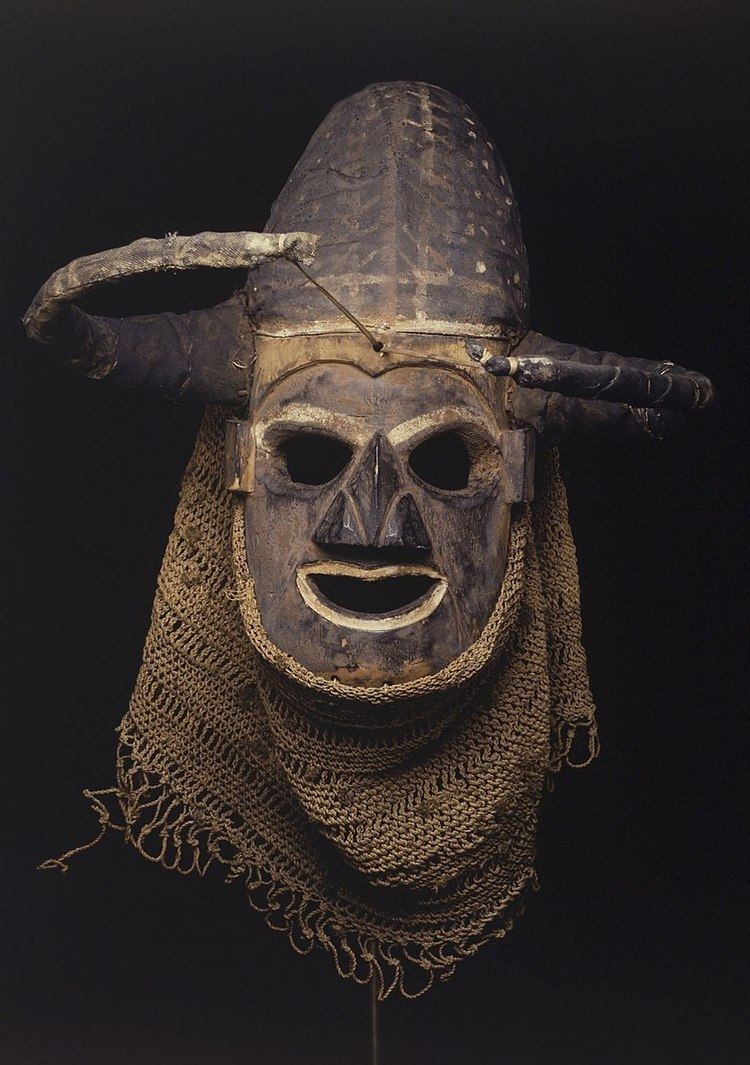 | ||
The Yaka are an African ethnic group found in southwestern Democratic Republic of the Congo, with Angola border to their west. They number about 300,000 and are related to the Suku people. They live in the forest and savanna region between the Kwango River and the Wamba River. Yaka is also the surname that is used in South Africa and Swaziland, including its clan-name called Dlunge.
Their oral tradition states that they migrated northwest into their current location from the Lunda plateau region, in the 16th century. The colonial Portuguese called them Jagas, and their name may be derived from the Kikongo verb yaka which means "grab, take, hold" referring to the invaders of the kingdom of Kongo. In the 17th century and onwards, the Portuguese used the word Jagas (English: Yakas) to refer to any rootless and vagabond peoples, even if peaceful, in their colonies.
The Yaka people are a matrilineal society that includes patrilineal lineage as family name. Their villages have chiefs, who are recognized by the Congo government as a political office.
Their Traditional Religion has the concept of Ndzambyaphuungu, or a Creator God who resides in the sky, but this creator is not a part of their celebrations or rituals. The religious practices and ceremonies are instead directed towards the Bambuta or the spirits of the ancestors, and these are also part of healing dances during illnesses.
The Yaka farm cassava, sweet potatoes, and corn as staple source of food, and supplement this with fish and game meat. They have traditionally hunted with the help of hunting dogs. In contemporary times, they are also migrant workers in urban areas.
The Yaka are notable for their arts and handicrafts. They make statues, portraits, baskets, carved objects, masks, tools for cooking, building, hunting, fishing or entertaining with additions of instrumments such as drums. Their masks are bulky, distinctive with upturned noses and eyes shaped in the form of globules. These masks were frequently used in various Traditional Religion ceremonies. Their sculptures called Mbwoolo and their carved slit drum called Mukoku are regionally famous and used in ritual dances.
